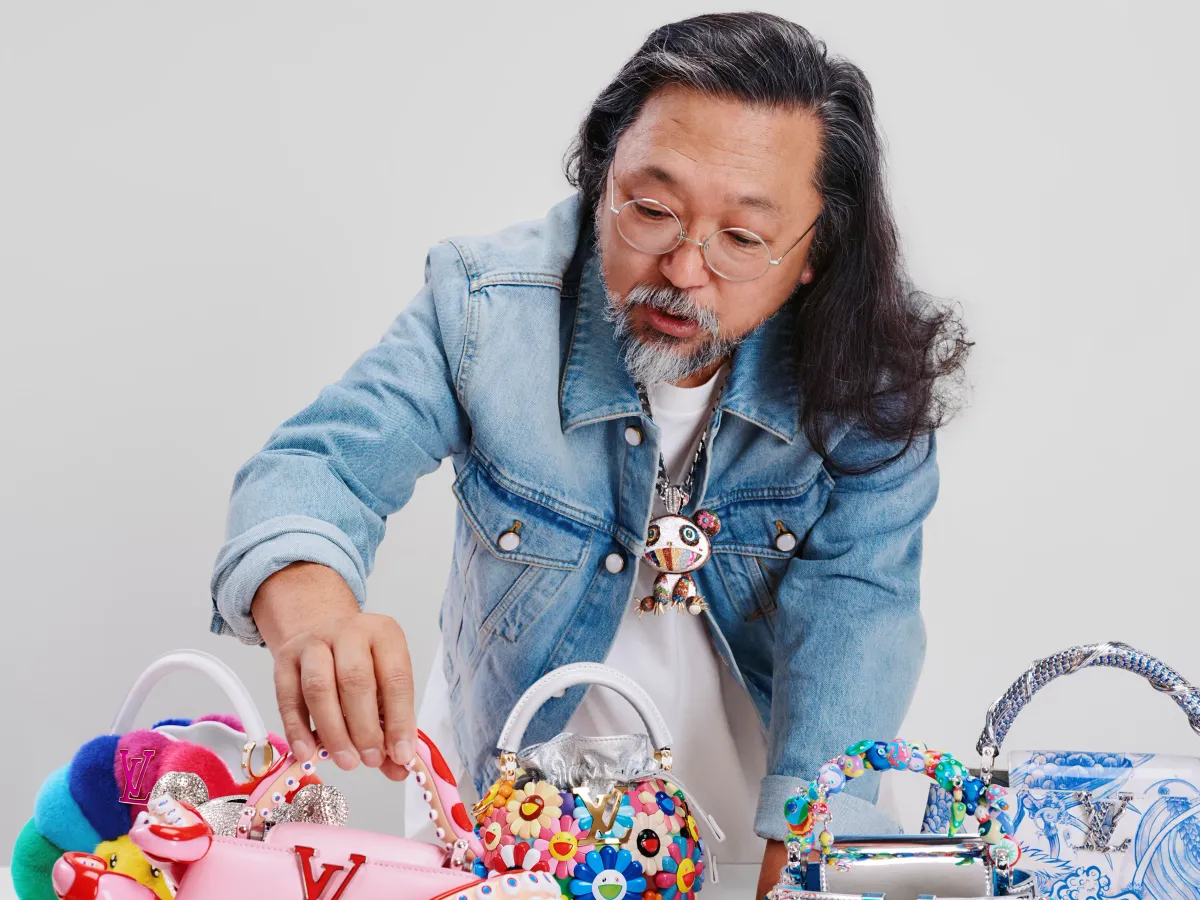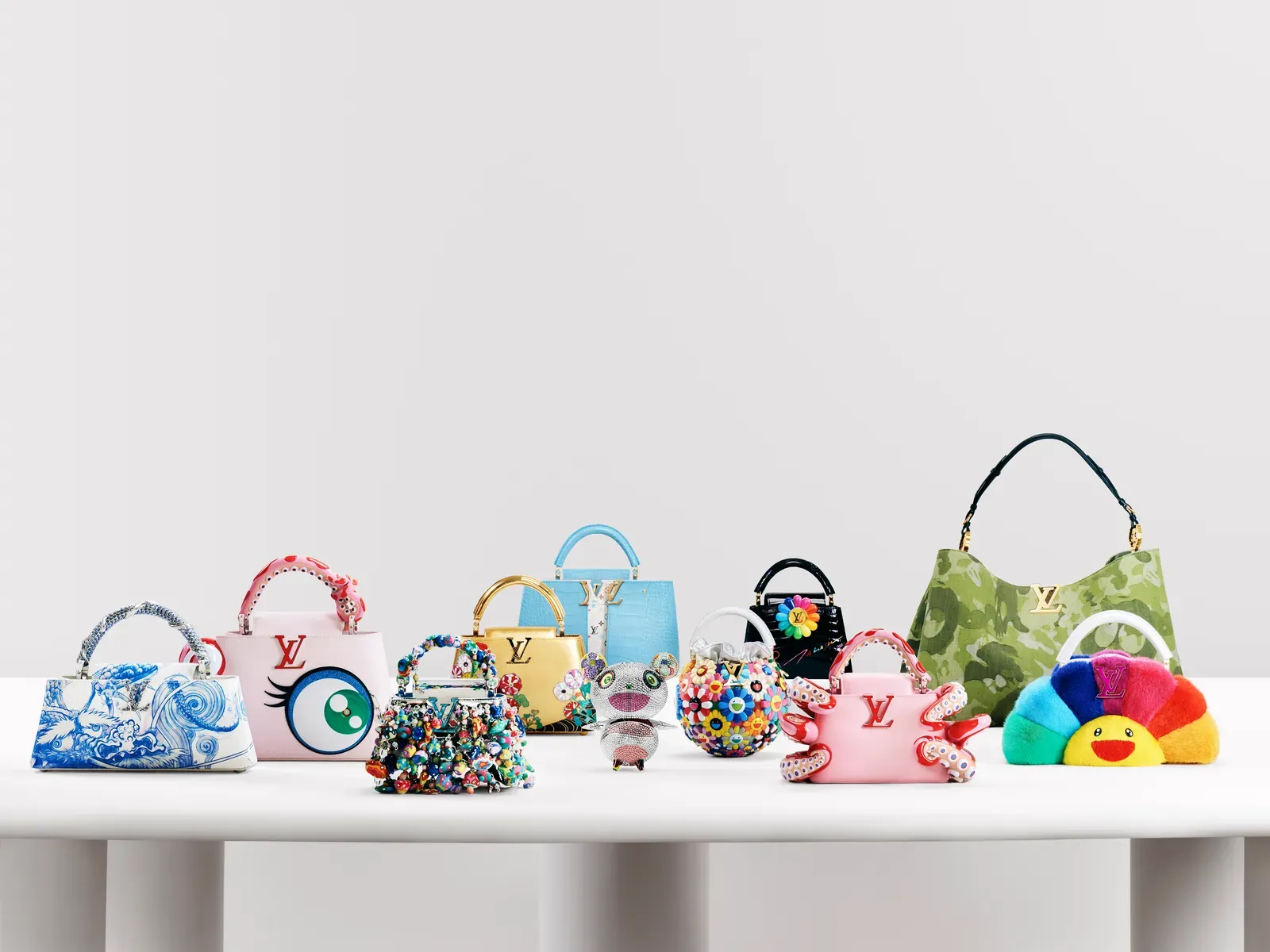Takashi Murakami: The Superflat Visionary Redefining Luxury Art in 2025
From Louis Vuitton collaborations to iconic album covers with Kanye West and Kid Cudi, Takashi Murakami continues to blur the lines between pop culture and fine art. Explore how his 2025 projects and past masterpieces define the future of “The Gallery.”

In a world where the line between high art and street culture keeps dissolving, Takashi Murakami stands tall, not just as an artist, but as a movement. Known for merging anime aesthetics with fine-art sensibilities, Murakami has evolved beyond the gallery walls to become a cultural architect of color, chaos, and commerce.
Murakami’s Superflat philosophy blending Edo-period tradition with modern pop iconography has long served as his visual and cultural manifesto. The smiling flowers, skulls, and psychedelic palettes aren’t just eye candy; they’re commentaries on consumerism and identity.
Through Superflat, Murakami flattened more than just canvas, he flattened hierarchy itself.
In his world, a Louis Vuitton bag can hold the same artistic weight as a museum piece.
“Fashion has become more artistic than before, and art, in turn, must assert even deeper conceptual meaning to keep up.” — Takashi Murakami, 2025
2025 marked the return of one of the most celebrated collaborations in fashion and art history. Louis Vuitton and Takashi Murakami reunited for the Artycapucines VII collection, an ultra-limited drop that transforms the brand’s signature Capucines bag into wearable art.
Each design is a living canvas mushrooms, tentacles, and cosmic forms bloom across textured leather a reflection of Murakami’s ongoing fascination with beauty, mutation, and chaos.

Released during Art Basel Paris 2025, the collection reaffirmed Murakami’s status as a cultural polymath whose works transcend category and discipline.
These aren’t handbags they’re micro-exhibits. Each piece feels like a collaboration between Tokyo’s otaku energy and Parisian luxury.
Read more:
- Louis Vuitton × Takashi Murakami Limited Collection 2025 – Marie Claire
- Takashi Murakami Adds Tentacles and Mushrooms to LV’s Latest Bags – Elle Decor
Murakami’s reach in 2025 extends far beyond luxury collabs. His recent exhibitions, including “JAPONISME → Cognitive Revolution: Learning from Hiroshige” in New York and “Kawaii Summer Vacation” in Seoul, highlight his duality he’s as comfortable dissecting art history as he is remixing it.
At The Broad in Los Angeles, a new installation featuring “Hiroshige’s 100 Famous Views of Edo: Japonisme Reconsidered Moon Pine, Ueno (2024–25)” reminded visitors that Murakami is still a painter’s painter.
Beneath the gloss and glow lies decades of technical mastery rooted in nihonga traditions.
Murakami’s relevance today isn’t nostalgia, it’s evolution. His art moves seamlessly between NFTs, digital experiences, luxury fashion, and contemporary galleries.
He’s the rare artist who can headline both Art Basel and a Supreme drop without contradiction.
But perhaps his most legendary crossovers came from the world of music.
In 2007, Murakami teamed up with Kanye West to design the visuals for Graduation, one of hip-hop’s most iconic albums. The artwork a cosmic, anime-inspired journey featuring the Dropout Bear launched into a pastel-colored sky redefined how music could look and feel.
The collaboration didn’t just brand an album; it cemented the bond between art and hip-hop, setting the tone for a generation of visual-driven artists and musicians who see no boundary between the canvas and the soundwave.
Fast-forward to 2018, and Murakami reunited with Kanye this time alongside Kid Cudi for the collaborative album KIDS SEE GHOSTS. The cover art, inspired by Hokusai’s Thirty-Six Views of Mount Fuji, captures a dreamlike fusion of Japanese mythology and psychedelic surrealism.
Just like the music, it’s a visual manifestation of pain, healing, and transcendence, a story told through texture, spirit, and storm.
From Graduation to KIDS SEE GHOSTS, Murakami didn’t just design album covers he turned them into modern relics, blending emotional narrative with cultural rebellion.
Even today, his influence echoes through album aesthetics, fashion collaborations, and pop culture at large.
In the age of collaboration, Murakami remains the blueprint, proof that art can live in a museum, a music video, and a luxury handbag all at once.
With new exhibitions on the horizon and continued partnerships with fashion houses, Murakami is positioning Superflat for its next era, one where AI, AR, and digital art redefine perception itself.
His studio, Kaikai Kiki Co., Ltd., continues to nurture emerging artists, extending his influence into the next generation of Japanese and global creatives.
As he merges the tactile with the virtual, Murakami’s world expands and so does ours.
Takashi Murakami’s legacy isn’t confined to canvas, galleries, or even culture.
It lives in the flow between them, where art meets aspiration, and tradition becomes tomorrow.
For Defiant Legends: The Gallery, his work stands as a reminder that true defiance is timeless, and sometimes, it comes smiling back at you in a field of flowers. 🌸
